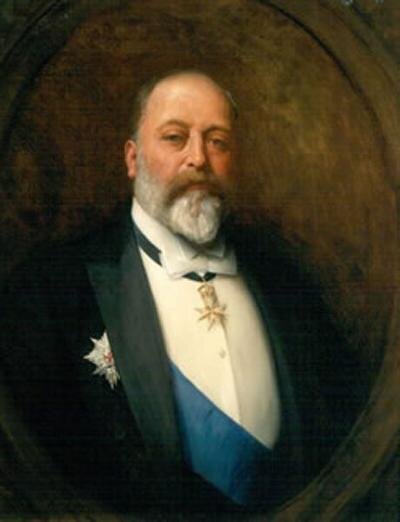who invented the tuxedo and why?
Houstoun G. Waring
Edward VII
“If this mandatory social isolation continues for long, we may well find people beginning to dress for dinner at home again or host a Zoom cocktail party to engage with friends and break up the monotony.”
The Duke of Windsor
As I sit at home writing this in my robe and slippers, during a time in which many persons around the globe have for weeks worn nothing but pajamas or “athleisure,” the antiquated idea of dressing for dinner got me thinking. One particular Facebook post I recently came across read, “I feel the overwhelming need to put on a suit and just sit at my house for a few hours so I can just avoid feeling like the slob in sweats I’ve been, for going on 3 weeks.” A comment asked, “Time to bring back, ‘dressing for dinner?’”
While we may ordinarily dress up on a Friday or Saturday night by wearing a button down and dress trousers, perhaps a blazer, maybe even a tie for very nice occasions, the idea of donning a tuxedo for dinner at home on a random Tuesday seems comical. I have often been asked who invented the tuxedo and why. The second half of the answer is precisely that: for dinner at home on a random Tuesday. The distinction is, at that time, wearing a tuxedo was actually considered dressing down.
In the mid 19th century, a gentleman’s evening included a multi-course dinner in the company of elegantly attired ladies. “White Tie,” consisting of a stiffly starched shirt with tall collar and tailcoat, was de rigueur. After dinner, the ladies would retire to the drawing room while the gentleman would converse over brandy and cigars before rejoining the ladies. Victorian ladies did not smoke, at least openly. To mask the scent of cigars, gentlemen would replace their tailcoats with a shorter jacket meant to absorb the smoke and catch any fallen ash. These smoking jackets were traditionally shawl-collared and made of luxurious velvet, silk, or both.
In 1865, the Prince of Wales, later Edward VII, commissioned a coat without tails as a more comfortable alternative for private dinners. Henry Poole of Saville Row produced a coat in the style of a smoking jacket, single breasted with a shawl lapel, in the same black worsted wool as the Prince’s tailcoat, with lapels faced in silk. This new dinner jacket gradually replaced the tailcoat for private dinners.
By the 1920s, Edward VII’s grandson, then Prince of Wales, was impatient with court protocol and the stuffiness of his father’s generation. In 1936, after reigning as Edward VIII for a mere 326 days, Edward abdicated the throne to marry a twice-divorced American, Wallace Simpson. He was created Duke of Windsor and lived the remainder of his life in retirement in Paris. Even as Prince of Wales, he was something of a clothes-horse and one of the first style icons of the 20th century. The Prince replaced the stiff boiled evening shirt with the soft, pleated shirt with attached turndown collar that is the standard tuxedo shirt today. By the 1930s, he had popularized the dinner jacket as an alternative to the tailcoat for semi-formal events outside of the home.
The Second World War solidified the dinner jacket’s place as acceptable eveningwear for all but the most formal occasions, as gentlemen returning from war donned a more relaxed, yet elegant wardrobe in the post-war boom. Middle and upper-class Americans embraced the dinner jacket through the 1950s, ‘60s and ‘70s for dinner clubs and cocktail parties at home in the company of friends.
In the decades since, the dinner jacket, or tuxedo, has remained the most common form of dress for formal dinners, weddings, debutante parties, charitable events, and many others. While the world has become increasingly less formal, numerous occasions for the tuxedo remain. Previous generations may have grown weary of the formality, but many individuals now look with excitement at the somewhat rare opportunity to get dressed up. If this mandatory social isolation continues for long, we may well find people beginning to dress for dinner at home again or host a Zoom cocktail party to engage with friends and break up the monotony.

